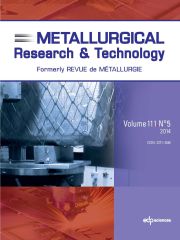Article contents
Meeting technological and social challenges – Sustainable design principles for damage tolerant microstructures
Published online by Cambridge University Press: 28 September 2012
Abstract
For advanced high strength steels for automotive application, the time between materials development and regular use in cars, trucks and similar vehicles is rather short. In contradiction to this, hot rolled plates made of high strength low alloy steels which have been developed many years ago still do not find application fields in structural steelwork although they offer impressive mechanical properties. In this paper we argue that inadequate design rules in civil and mechanical engineering prevent such modern high strength steels from displaying their lightweight potential. A technological approach to the problem presented in this paper is to apply damage mechanics models together with probabilistic safety concepts for derivation of new improved safety factors. However, a major obstacle in this process is that these new safety factors will have to be included in the design standards. The development of such standards contains both institutional and epistemic obstacles to including alternative safety models. Taking standardization in Europe as an example, the standardization committee is characterized by both national interest representation and attempts to stimulate European integration and competitiveness. At the epistemic level, different understandings of what counts as evidence for material safety may challenge and postpone adoption of new calculative models. Institutionalization and epistemology thus contribute to a framework for standardization that needs to be questioned in order for new approaches to be accepted. Such questioning cannot be done on the basis of developing new calculation models alone, but needs a clear social component of building coalitions around the inclusion of new considerations, for example those related to sustainability.
Keywords
Information
- Type
- Research Article
- Information
- Metallurgical Research & Technology , Volume 109 , Issue 5: Social Value of Materials , 2012 , pp. 369 - 379
- Copyright
- © EDP Sciences 2012
References
- 2
- Cited by

